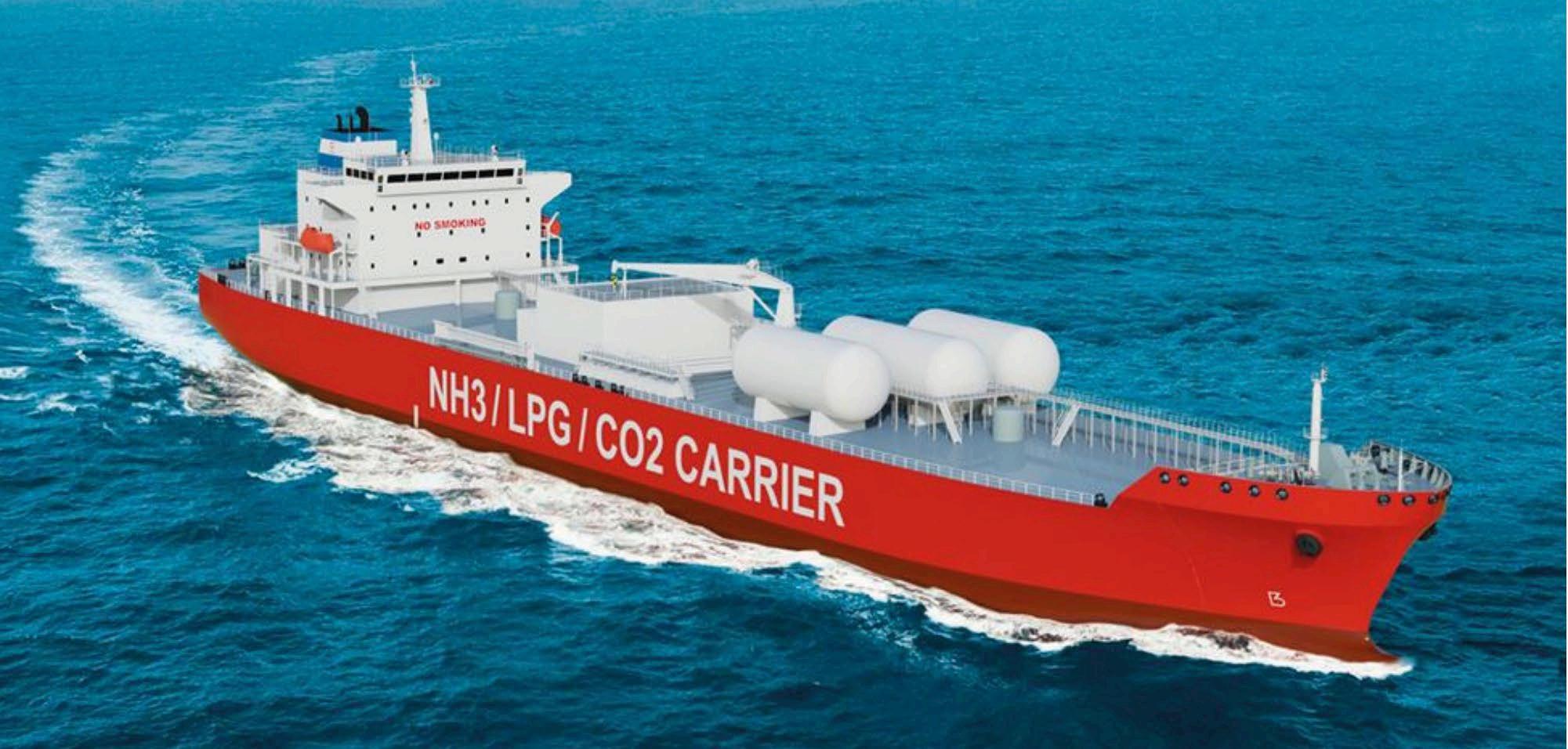
2 minute read
Exmar trials new containment
from HCB November 2021
BUILT TO FIT
CARBON CAPTURE • LATTICE TECHNOLOGY’S FREE-FORM PRESSURE VESSELS CAN BE USED TO TRANSPORT CARBON DIOXIDE IN LARGE VOLUMES; EXMAR IS TAKING PART IN THE PROJECT
EXMAR AND LATTICE Technology have teamed up on an agreement to jointly develop a new concept for a CO2 carrier. Exmar notes that the need to reduce carbon emissions as well as the world’s reliance on secure energy supplies means that carbon capture, utilisation and storage (CCUS) projects offer a fast-track solution – but will need a way to transport captured CO2 economically and on a large scale.
Exmar and Lattice are responding to this demand with a design for a 40,500-m3 CO2 carrier, also capable of carrying LPG and ammonia, with a Panamax beam. Such a vessel will be tailored to support CCUS projects with capacities up to 10m tonnes per year.
The project will combine Lattice’s existing innovative tank design for CO2 transport and Exmar’s long experience in the design and operation of modern, efficient gas carriers. Studies have already proven Lattice’s patented tank design, Lattice Pressure Vessel (LPV), as providing a workable solution for the transport of large volumes of CO2 at low and medium pressures. The robust pressurised storage tanks can be made in an efficient shape to fit the ship’s hull and allow for large storage capacity, and can also be used with liquefied hydrogen, LPG and even LNG.
The patented tank design will also provide the best storage solution for offshore CO2 liquefaction or re-injection projects. An additional benefit for offshore storage is that the LPV design prevents sloshing problems even in the harshest environments. With its experience in floating gas infrastructure solutions such as floating LNG receiving and storage units, Exmar says it will be the ideal partner for such developments.
RADICAL IDEAS “We are very pleased and excited about this joint venture with Lattice as we strongly believe CCUS will be a major contributor in our efforts to decarbonise the atmosphere,” says Jens Ismar, executive director of shipping at Exmar. “We believe the Lattice tanks provide the most flexible and economical way to accomplish this.”
Keunoh Park, CEO of Lattice Technology, adds: “This project provides an excellent opportunity to demonstrate that the LPV technology will be a key enabler in making shipping greener with lower emissions and by providing important infrastructure for transporting and dealing with CO2.”
Lattice Technology, based in Daejeon, South Korea and with an office in Oslo, was founded in 2012 with a remit to develop a new approach to containment designs for pressure vessels for use with liquefied gases. exmar.be lattice-technology.com
THERE WILL BE A NEED FOR A WAY TO MOVE LARGE










